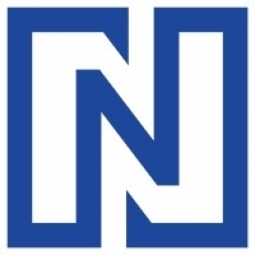下载PDF
NFAIRLENDING CASE STUDY: Rockland Trust Uncovers New Opportunities While Reducing Redlining Risk with Nfairlending
技术
- 分析与建模 - 实时分析
适用行业
- 金融与保险
适用功能
- 商业运营
用例
- 监管合规监控
- 质量预测分析
服务
- 数据科学服务
挑战
Rockland Trust 是一家在马萨诸塞州和罗德岛州提供商业和消费贷款的银行,过去十年来,该银行发展迅速,收购了多家银行,扩大了贷款组合。随着监管机构和审查人员对银行合理预期市场区域 (REMA) 的持续审查,Rockland Trust 的合规副总裁兼公平贷款官 Allen Bernier 希望确保其机构采取一切必要措施确保合规。他的一项主要任务是确保其银行没有不受控制的红线风险。当使用竞争对手的 HMDA 产品时,Bernier 的团队会花一整天时间调整数据和研究公式。这使他们几乎没有时间专注于分析最重要的事情 — — 数据的实际含义。
关于客户
Rockland Trust 是一家成立于 1907 年的银行,在马萨诸塞州和罗德岛州承销商业 (70%) 和消费者 (30%) 贷款。该银行在过去十年中发展迅速,收购了多家银行并扩大了其贷款组合。该银行的市值为 130 亿美元,位于马萨诸塞州罗克兰。自 2016 年以来,它一直是 Nfairlending 的客户,其主要审查者是 FDIC。该银行的主要任务之一是确保其不存在不受控制的红线风险,这项任务由 Rockland Trust 的合规副总裁兼公平贷款官 Allen Bernier 监督。
解决方案
Rockland Trust 希望找到一种经济高效的解决方案,帮助其管理合规性、降低合规风险并更好地了解其贷款数据。Nfairlending 是一款基于 Web 的安全解决方案,可帮助银行轻松管理其 HMDA 和非 HMDA 贷款的公平贷款合规流程,并可即时分析数据和提供可靠的报告,从而节省时间和精力。Bernier 使用 Nfairlending Redlining Analytics 模块分析其银行的数据,以查找营销不足的社区 - 这可能是红线的指标。为了确保其银行的营销实践不存在 REMA 问题或红线风险,Bernier 收集了营销部门发送直邮广告的邮政编码列表,并绘制了发送地点的热图。使用 Nfairlending 的 Redlining Analytics,他将邮政编码添加到分析区域参数中,并按人口普查或邮政编码绘制地图。通过比较这两张地图,他可以确定是否排除了低收入或中等收入 (LMI) 社区内或附近的区域。
运营影响
相关案例.

Case Study
Real-time In-vehicle Monitoring
The telematic solution provides this vital premium-adjusting information. The solution also helps detect and deter vehicle or trailer theft – as soon as a theft occurs, monitoring personnel can alert the appropriate authorities, providing an exact location.“With more and more insurance companies and major fleet operators interested in monitoring driver behaviour on the grounds of road safety, efficient logistics and costs, the market for this type of device and associated e-business services is growing rapidly within Italy and the rest of Europe,” says Franco.“The insurance companies are especially interested in the pay-per-use and pay-as-you-drive applications while other organisations employ the technology for road user charging.”“One million vehicles in Italy currently carry such devices and forecasts indicate that the European market will increase tenfold by 2014.However, for our technology to work effectively, we needed a highly reliable wireless data network to carry the information between the vehicles and monitoring stations.”

Case Study
Safety First with Folksam
The competitiveness of the car insurance market is driving UBI growth as a means for insurance companies to differentiate their customer propositions as well as improving operational efficiency. An insurance model - usage-based insurance ("UBI") - offers possibilities for insurers to do more efficient market segmentation and accurate risk assessment and pricing. Insurers require an IoT solution for the purpose of data collection and performance analysis

Case Study
Smooth Transition to Energy Savings
The building was equipped with four end-of-life Trane water cooled chillers, located in the basement. Johnson Controls installed four York water cooled centrifugal chillers with unit mounted variable speed drives and a total installed cooling capacity of 6,8 MW. Each chiller has a capacity of 1,6 MW (variable to 1.9MW depending upon condenser water temperatures). Johnson Controls needed to design the equipment in such way that it would fit the dimensional constraints of the existing plant area and plant access route but also the specific performance requirements of the client. Morgan Stanley required the chiller plant to match the building load profile, turn down to match the low load requirement when needed and provide an improvement in the Energy Efficiency Ratio across the entire operating range. Other requirements were a reduction in the chiller noise level to improve the working environment in the plant room and a wide operating envelope coupled with intelligent controls to allow possible variation in both flow rate and temperature. The latter was needed to leverage increased capacity from a reduced number of machines during the different installation phases and allow future enhancement to a variable primary flow system.

Case Study
Automated Pallet Labeling Solution for SPR Packaging
SPR Packaging, an American supplier of packaging solutions, was in search of an automated pallet labeling solution that could meet their immediate and future needs. They aimed to equip their lines with automatic printer applicators, but also required a solution that could interface with their accounting software. The challenge was to find a system that could read a 2D code on pallets at the stretch wrapper, track the pallet, and flag any pallets with unread barcodes for inspection. The pallets could be single or double stacked, and the system needed to be able to differentiate between the two. SPR Packaging sought a system integrator with extensive experience in advanced printing and tracking solutions to provide a complete traceability system.

Case Study
Transforming insurance pricing while improving driver safety
The Internet of Things (IoT) is revolutionizing the car insurance industry on a scale not seen since the introduction of the car itself. For decades, premiums have been calculated using proxy-based risk assessment models and historical data. Today, a growing number of innovative companies such as Quebec-based Industrielle Alliance are moving to usage-based insurance (UBI) models, driven by the advancement of telematics technologies and smart tracking devices.

Case Study
MasterCard Improves Customer Experience Through Self-Service Data Prep
Derek Madison, Leader of Business Financial Support at MasterCard, oversees the validation of transactions and cash between two systems, whether they’re MasterCard owned or not. He was charged with identifying new ways to increase efficiency and improve MasterCard processes. At the outset, the 13-person team had to manually reconcile system interfaces using reports that resided on the company’s mainframe. Their first order of business each day was to print 20-30 individual, multi-page reports. Using a ruler to keep their place within each report, they would then hand-key the relevant data, line by line, into Excel for validation. “We’re talking about a task that took 40-80 hours each week,” recalls Madison, “As a growing company with rapidly expanding product offerings, we had to find a better way to prepare this data for analysis.”





